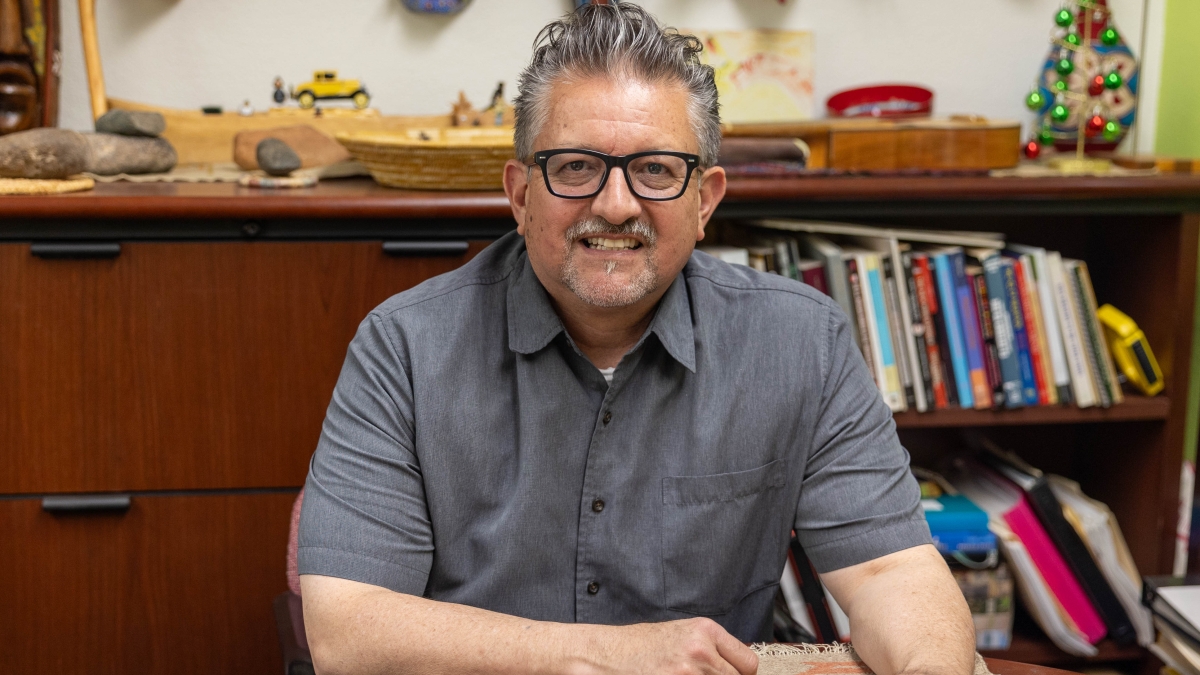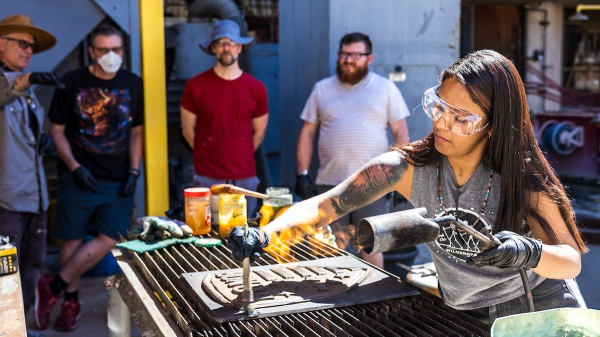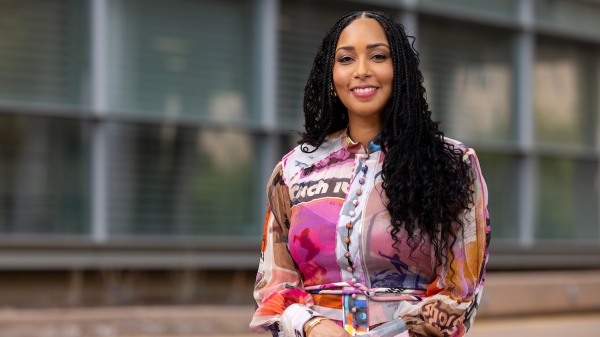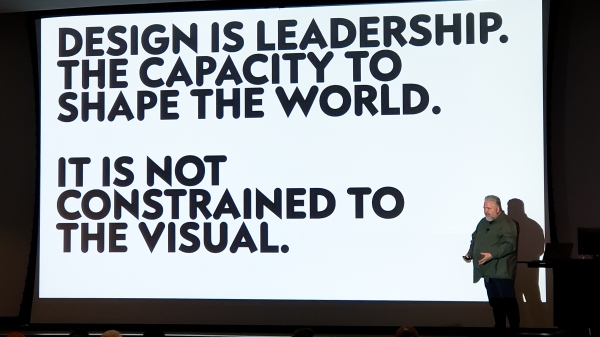First ASU California Center artist-in-residence is animated to work with students
Renowned Chicano cartoonist Lalo Alcaraz explains how his 'superpower' has created a world of opportunities

Lalo Alcaraz has been named the first artist-in-residence for the ASU California Center. Above, he poses for photo on ASU's Tempe campus. Photo by Dustin Davila-Bojorquez/ASU School of Transborder Studies
Growing up on the San Diego-Tijuana border and being a first-generation Chicano artist, Lalo Alcaraz didn’t see himself reflected in the mainstream media.
So he made it his mission to promote Mexican American culture in a more realistic way, the way he saw it, living it in Los Angeles.
Alcaraz combats misinformation and expresses his thoughts through editorial cartoons that have been published in the Los Angeles Times and other newspapers around the nation. His daily comic strip, “La Cucaracha,” is celebrating 21 years in syndication and his resume keeps growing.
Alcaraz founded his own production company, Pocho Villa Productions, worked on the Oscar award-winning "Coco," worked at Nickelodeon and most recently pitched the new movie "Casagrandes" to Netflix.
Now, he has been named the first artist-in-residence at the ASU California Center. In this new role, he will engage with the university community through workshops, lectures and presentations throughout the year.
The artist is no stranger to working with ASU faculty and staff, having previously collaborated with the School of Transborder Studies as their artist-in-residence in 2021, where he worked on a project with ASU Charter Professor Gilberto Lopez to produce culturally-tailored, evidence-based cartoons for the COVIDLatino project.
The busy cartoonist is also working with the LA County Office of Education to develop a cartoon centered around diversity and equity in schools and other topics, such as green jobs and water conservation.
ASU News met up with Alcaraz to learn more about his career and his new ASU appointment.
Editor's Note: Answers have been edited for length and clarity.
Question: How did you discover your artistic gift?
Answer: When I was a kid, I was that kid. The best drawer in school, right? There’s always that one kid. I was him. People would always ask me to draw them stuff and sometimes it would make people mad. And that’s when I started realizing that I can draw really well and express myself in that way. It became what I call my “superpower.”
Q: Why political cartoons as your niche vs. any other type of cartoon?
A: My brain works that way; I see the hypocrisy and I like to push back against injustice. I love comics. ... I can crank out ideas and execute them real quick and move on. And I’m angry; I grew up seeing how my parents were treated. (People) treated me like they treated my parents and assumed I was an immigrant. I got a big chip on my shoulder; I don’t relax — I drink coffee and fire.
Q: What advice would you give to a young cartoonist?
A: Even though our means of distribution in terms of how cartoons are read is changing (print is going away), you have to learn to adapt and put your cartoons online where people will see them. And it’s not easy; it takes a lot out of your day, but it’s worth it. All the tools you need are a pencil and paper.
Q: Why did you decide to accept the invitation to be ASU’s artist-in-residence at the California Center?
A: I’m a firm believer in education and opportunity for our community. I love how ASU is all over the place and in LA now. ... There should be more opportunities and more access for others. I’m of the same mindset as (ASU President) Michael Crow; we agree that education should be available to everyone, especially the Latino community. More access to universities is important.
Q: What does it mean to you to be the first artist-in-residence in California?
A: It’s a great honor. For me personally, it shows that I can be multidisciplinary. I consider myself an eclectic multidisciplinary artist. ... So this is a great way for me to still teach, in a way, through these partnerships. I feel very lucky that this is my day job.
Q: Can students visit with you?
A: Yes. I’ll be back in Tempe in the fall, and I consider myself available to anyone who wants to sit down, whether here or in LA. I’ll be working on a project with the School of Transborder Studies to celebrate their 15th anniversary and I hope to work with the art department, if I can, and develop some other ideas I have.
I can help students hone in on their voices and storyboarding, anything. I want students to know it's possible to patch together a career like I did after all this. It’s possible.
More Arts, humanities and education

'Devils in the Metal': ASU vet leads iron cast workshop for former service members
Bruce Ward believes everyone has a symbol of strength or resilience, and they have an obligation to find it. His happens to be a paper crane in an ocean wave. “It’s the idea that we are the…

ASU English professor wins Guggenheim Fellowship for poetry
The awards — and opportunities — keep piling up for Safiya Sinclair, an associate professor in Arizona State University’s Department of English. In mid-April, Sinclair received one of 188 Guggenheim…

Designer behind ASU’s brand named newest Herberger Institute Professor
Bruce Mau, co-founder and CEO of the Chicago-based holistic design consultancy Massive Change Network, has joined Arizona State University’s Herberger Institute for Design and the Arts as its newest…